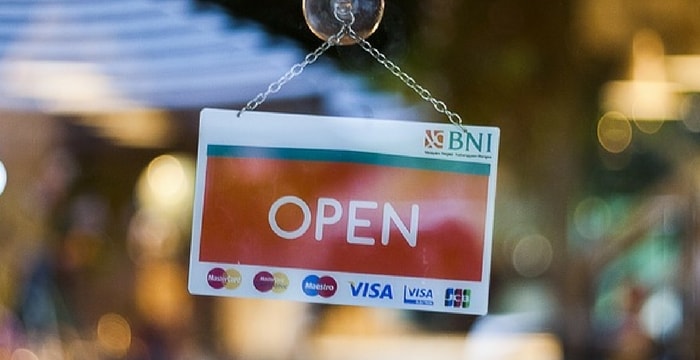Fast Food Restaurant – 53% Profit Margin, Business Plan

When there is a will, there is a way. This specifically holds true when one is starting a fast food restaurant business. Food business is drastic. It can either soar to unimaginable heights or fail like a dud. This makes it the most challenging business one can possibly think of. Most of them fail to sustain for even months. Thus effective business planning is important. Implementation is different from ambition and clear implementation is required at all stages of the business. If you are looking to start your own fast food restaurant business then I advise you to read this article till the very end and note down given points for your business plan.
Fast food in fact has gained momentum with our fast paced world. Kids, youth and people of all age groups eat fast food. With hectic deadlines and busy schedules, there is less time to cook. Fast food joints are accessible, have varieties ranging from sandwiches to everything else under the sun, available and extremely affordable.
Also all sections of the society are its consumers. One should understand certain parameters to enter this business.
An effective business plan could mean a positive start to sorting out one’s future plans in this field. Here are a few things you’ll want to do before you open your fast food corner:
Make a business plan
From planning, capital creation, staffing, and finally operating, research is required to create a holistic business plan. Include below points in your business plan and start following it from the very beginning.
Get registered
One should follow and complete all registration formalities, licensing requirements, registration of shop, vehicle or the whole idea in itself. One should acquire a food operator license from the concerned governing body. Registering will help one during legal, ethical complexities and will ensure one is in tune with state policies and standards.
Select type of food
One should have clarity as to the kind and type of food one wants to sell. The content, ingredients etc should be known as per requirements. The kind of food as per local tastes, what they want to eat and what niches are left unexplored. Creating an interesting menu with good combinations is prima forte to the business.
Find proper location
Location is another important factor because it determines our clientele base and the type, number and traffic of people who would visit your centre. If your restaurant is located in a place with low visibility and lack of crowd, then chances of having customers is low and this may not lead to profits. Parks, areas around colleges, universities or hostels, public places, beaches are more likely to get more people and create business.
Figure out funding
One should have clear idea as to how much capital one wants to invest and its sources. Loans, grants or rainsing through private sources are some options. One can create elaborate plans to attract corporate investment in the form of sponsorship for raw materials or affiliation. Drawing a sheet of profits and likely costs and expenses is important.
Follow health and safety measures
Adhering to state regulations and basic standards of health, cleanliness, sanitation and surroundings is important. Every place has their own regulations one must know about and follow to enjoy uninterrupted continuation of businesses. Having or using clean utensils and sanitising them for the health of customers, using good ingredients and fresh produce is important.
Set pricing
Setting the menu and deciding on the prices is important. Price should be maintained to maximise profitability with respect to each product or item off the menu. What one can do is to set prices for individual products as well as combo products to reach maximum revenues. This is important keeping in mind the huge competition in this field.
Run marketing campaigns
This is the key to attract sales and hence growth. Advertising your place far and wide can work wonders for your place. Flyers, pamphlets, social media campaigns, collaborations, freebies, combos, handbills, can be given out and distributed. Print ads, Television and internet based ads, growing social media media followers by posting engaging pics, registering with food apps and food bloggers is important to give that edge.
Know your customer
One should realise the volatility of the business and have clear idea about who your target groups are. It should reflect on the quality and type of food one sells in the outlet. While the choices are endless, what one needs to know is the demographic quotient of the traffic. Also estimating their tastes and current food fads or sensations. Incorporating local elements to regular food through naming will also make one attractive to customers.
Hiring and staffing
Hiring good efficient staff or if it is a single employee, one should make sure they are well placed. This is because of the chances of expansion. Even if it is a single person runninght outlet, he has to be well versed with the rules of the trade, the ups, downs and the best target customers. He has to be a one man army who conveniently manages the trade.
Know your liabilities
One must understand the weaknesses of the business taking into consideration certain grim realities that will happen with time. People can get bored of the food, find a better price somewhere else. Thus it is a transient setting where the possibility of a steady future is more than bleak. Thus identifying those grey areas and creating back up plans would help.
Profit margin in fast food business
Profit margin in fast food restaurant depends on factors such as:-
- Menu and kitchen staff
- Rentals and other monthly expenses
Profit margin taking in mind 20 – 30% food cost, should be around 50 – 60% depending on competition, table turnover and cost control.
Thus while the lure to set up a fast food business is huge one should consider all possible pitfalls before stepping into one. Innovative strategies like food trucks, vans, grills and such strategies can add some interesting elements to your place. Also having succinct knowledge of the consumers is important. This helps understand and segregate our marketing strategies accordingly.
Providing 100% customer satisfaction should be the aim with understood planks like brand value and quality. Greeting the customers and providing an air of ease can attract young crowds and this will boost sales.
Being unique is the USP here. With more focus on healthy eating, fast food corner have a future that looks quite bleak. What one can do is to gain a first mover advantage to capture those extra brownies by starting healthy food options that not only accentuate health freaks but also satiate our taste buds.
FAQS
A fast food restaurant typically operates on a low-cost, high-volume business model. The restaurant offers a limited menu of inexpensive, ready-to-eat food items such as hamburgers, french fries, and soft drinks. The food is typically cooked in large quantities in advance and then kept warm until it is ordered. This allows the restaurant to serve a large number of customers quickly and efficiently.
There are several key components to a fast food restaurant business plan. They include the executive summary, company description, market analysis, competitive analysis, product/service description, marketing strategy, sales strategy, and financial projections.
There are a number of costs associated with opening a fast food restaurant, including the cost of leasing or purchasing a location, the cost of construction or renovation, the cost of equipment and furnishings, the cost of inventory, and the cost of marketing and advertising.
There is no definitive answer to this question as it depends on a number of factors, including the location of the restaurant, the type of food served, and the price point of the menu. However, some estimates suggest that a fast food restaurant can generate anywhere from $1 million to $2.5 million in annual revenue.
There are a few key marketing strategies for a fast food restaurant:
1. Offering a variety of menu items that appeal to a wide range of customers
2. Offering value deals and promotions to entice customers
3. Creating a strong brand identity and marketing campaign that resonates with customers
4. Focusing on convenience and ease of ordering
5. Offering a unique customer experience
There are a few risk factors associated with a fast food restaurant. These include the possibility of food poisoning, as well as the potential for contracting a foodborne illness. There is also a risk of getting obesity from eating too much fast food.
There are several potential opportunities for a fast food restaurant. They include expanding the menu to include healthier options, providing more customization options for customers, and offering delivery or take-out services. Additionally, a fast food restaurant could focus on providing a more comfortable and inviting dining experience, or offer loyalty programs or discounts to customers.
There is no surefire way to guarantee success for a fast food restaurant, but there are some things you can do to improve your chances:
-Choose a popular, high-traffic location for your restaurant.
-Offer a variety of menu items that appeal to a wide range of customers.
-Keep your prices reasonable.
-Provide excellent customer service.
-Maintain cleanliness and a pleasant atmosphere in your restaurant.




